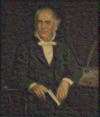Another Day, Another Deepdream
Dreamscope web app lets you choose your nightmare

Instagram meets DeepDream.
A web app called Dreamscope developed by Lambda Labs allows users to upload an image and apply different filters, including ones inspired by the computerized nightmares “dreamed” up by Google’s artificial neural networks. There are 15 filters to choose from when an image is uploaded to Dreamscope, and an additional three “exclusive” filters become options if users create a free account. The basic filters, which include, “Inceptionist Painting,” “Self Transforming Machine Elves,” and “Trippy,” alter the image in the most classic DeepDream fashion by adding objects such as swirls, slug limbs, and dog faces to the pictures. The other filters, including the exclusive ones, are more mild, but still entertaining.

Basic Dreamscope Filters
Here is a before and after of the founder and first editor of Popular Science, Edward Livingston Youmans, transformed with Dreamscope’s “Self Transforming Machine Elves” filter.

Google DeepDream
Here is Edward Livingston Youmans after being transformed with the exclusive “Angelhair” Dreamscope filter.

Edward Livingston Youmans
The DeepDream code was released last month by Google and is based on the Google Image software that processes and filters the mass amount of images coming through its browser. The program learns how to do this after it is shown a ton of different pictures of one object so that it knows what that object looks like. However, when the program is used to “dream up” images of the objects on its own, it gets confused and creates wild scenes of random globular limbs, cloud monsters, and other disturbing chimeras.
Dreamscope is a lot faster than Psychic VR Lab’s DeepDream image generator, which was one of the first DeepDream image generators that gained popularity. A DeepDream twitter bot spewed out a constant feed of those trippy images that could have sucked away your day. You can also spend hours sifting through a ton of Dreamscope’s altered images on its twitter page.
Last week the DeepDream code moved from stills to video with the DeepDream Animator, however given the thousands of Facebook likes that Dreamscope has garnered thus far, there is still a huge interest in finding new ways to transform images with DeepDream.
Now if only somebody would make a DeepDream phone app.
Updated July 23 to correct “A Lambda Labs Production” to “Lambda Labs.”